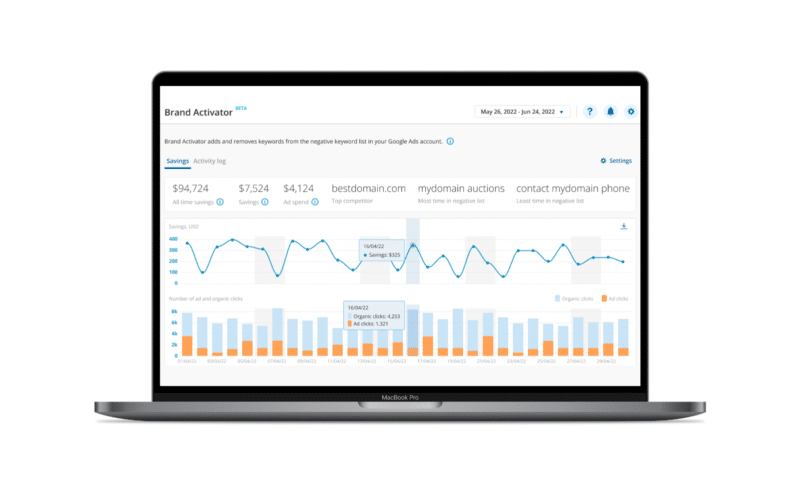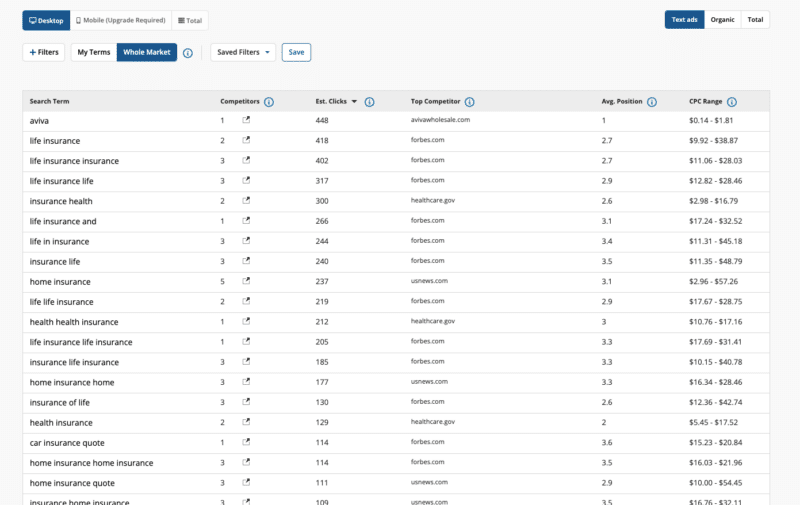
So, you headed into 2023 with a new pair of running shoes. You set off for your first run, but the track was much tougher than you first expected. At the end of your run, you realize that your heart rate remained in the red zone throughout, working you harder than you would have done in perfect conditions.
The moral of the metaphor: When pushed into the unknown, we tend to do quite well.
2023 has been a transformative year despite its many hurdles. We’ve all experienced budget, growth and efficiency pressures amidst the challenging economic outlook. At the same time, we witnessed an upsurge in Performance Max adoption, GA4 updates, the launch of Transparency Center, and the rise of Generative AI.
Despite the transformation, Google’s black box remains tightly shut.
In this article, we’ll identify some of the common blind spots advertisers are currently experiencing in three specific areas: Performance Max (PMax), managing Cost Per Clicks (CPCs) and affiliate growth.
Push the Performance Max limits
Performance Max campaigns, introduced by Google in 2021, have transformed online advertising, allowing advertisers to reach audiences across Google’s vast network with a single campaign.
Although Performance Max offers significant benefits, challenges still exist due to limited visibility and tracking. This makes regular monitoring, data analysis and optimization crucial for success.
Here are four tactics to push the Performance Max limits and bring your campaigns to light.
- Adopt multi-platform advertising.
PMax campaigns offer the distinct advantage of cross-platform advertising, enabling advertisers to reach diverse audiences and widen their online presence.- Tailor ads for each platform, considering unique format requirements. For instance, YouTube ads demand visual and engaging content, while Google Search ads benefit from keyword-focused, text-heavy approaches.
- Customizing ads for specific platforms is key to maximizing the impact of cross-platform advertising efforts.
- Leverage Smart Bidding strategies.
PMax campaigns are intended for pairing with Google’s Smart Bidding techniques, utilizing machine learning to refine your bids and budget in alignment with your campaign objectives.- Utilize Smart Bidding strategies like target Cost Per Acquisition (CPA), target Return On Ad Spend (tROAS), or maximize conversions to automatically fine-tune your bids for optimal value within your campaign budget.
- Ensure you establish suitable bidding targets and regularly monitor your campaign’s performance to enact essential refinements and enhance your outcomes.
- Craft captivating and appropriate ads.
Much like any other advertising endeavor, the effectiveness of your PMax campaign hinges on the quality of your ads. Develop alluring and relevant ads that strike a chord with your intended audience.- Use eye-catching visuals, clear messaging, and a compelling Call To Action (CTA) to encourage users to take action.
- Ensure that your ads are customized to the particular platform and ad format in use while ensuring alignment with your campaign objectives.
- Conduct tests and enhancements on your ads to pinpoint the most resonant content for your audience and refine your messaging.
- Monitor and enhance your campaign.
Actively monitor and refine your PMax campaigns to achieve the best results.- Observe your campaign’s performance and scrutinize the data for emerging trends or recurring patterns.
- Leverage tools like Whole Market View for a more comprehensive view of your spend across all Google channels, pinpoint underperforming ads, keywords, or placements and apply essential adjustments to fine-tune your campaign for peak optimization.
For proven tactics to improve precision, visibility and control in your Performance Max campaigns, check out our guide Unlock the black box: Four ways to get more from Performance Max.
Ride the CPC surge
Amid Google’s ongoing antitrust trial, there has been a notable spike in CPC rates, causing concern among advertisers. This unanticipated shift in Google’s advertising landscape has raised questions about its implications and the strategies advertisers must employ to adapt.
Google’s opacity regarding pricing adjustments has added to the uncertainty, leaving advertisers speculating about their motives and objectives. Here are five surefire ways to ensure you ride the CPC surge with certainty.
1. Managing your budget and avoiding wastage.
Advertisers should be ready to adapt their budgets to accommodate increased CPCs. Consistently monitoring and refining budget allocations is crucial for sustaining cost-effective campaigns.
Adthena is a valuable tool for pinpointing areas of budget inefficiency and enhancing spending effectiveness. Brand Activator enables advertisers to detect instances where they’re number one for a term in both paid and organic search without competing bidders yet still incurring costs on the clicks. These savings can either be pocketed or reinvested into generic terms.
By leveraging Brand Activator, Avanti West Coast saved 32.2% on brand spend and grew revenue on generics by 13%.
Identify your budget wastage in a complimentary brand bidding test.

2. Elevated ad quality.
Google’s commitment to enhancing user experience and ad relevance should encourage advertisers to prioritize the development of quality and relevant ad content. By taking this approach, they have the potential to enhance ad ranking and minimize CPCs.
Adthena’s Creative Insights tool empowers you to monitor the creative language employed by your competitors across all your search term groups, providing comprehensive market visibility. This data is invaluable for in-depth analysis, benchmarking, and optimization of every aspect of your ads.

3. Keyword enhancement.
Advertisers should review their keywords and bidding strategies. Prioritizing long-tail keywords and using negative keywords strategically can help monitor ad costs more effectively.
Adthena’s Search Term Detail feature provides insights into terms with high competitor presence, their volume potential and estimated cost. By recognizing terms that don’t align with your strategy or may conflict with other accounts, you can include them in your negative keyword list.

4. Market insights.
Through Adthena’s Market Trends report, you can closely monitor trends in CPC, the distribution of spending across different advertising channels and your competitive market share. This not only helps you adapt to Google’s pricing dynamics but also empowers you to seize emerging opportunities.

5. Data-powered choices.
Relying on data-driven insights, frequent data analysis and performance monitoring is essential to lowering CPCs. Advertisers must vigilantly oversee their campaigns and adapt strategies as necessary to maximize performance and ROI.
Embrace affiliate growth and guard against ad hijackers
Ad hijacking, sometimes known as brand poaching, direct linking, or URL jacking, is the practice wherein affiliates try to mimic a brand’s advertising by creating ads that closely resemble the brand’s original advertisements. This deceptive approach results in increased conversions and subsequent sales, allowing the affiliate to earn a commission of 5-10% from these transactions. Ad hijacking presents a twofold financial challenge for brands:
- Affiliates dishonestly obtain commissions they have yet to earn from brands.
- Affiliates artificially inflate the cost per click (CPC) for brands when bidding on their own branded keywords.
So, if you’re experiencing a sudden dip in brand search volume in Google Ads and no new competitors are appearing in the auction insights report, you may well be a victim of affiliate click fraud.
- Establishing a robust brand protection strategy involves continuous scrutiny of search results and active collaboration with brand protection platforms like Adthena’s Ad-Hijacking.
- By indexing and reporting numerous affiliate networks, advertisers can uncover thousands of instances of affiliate ad hijacking, accompanied by supporting evidence such as ad screenshots and affiliate IDs.
Adthena recently helped one global hotel brand in identifying 50 fraudulent reservations within two months. The responsible publisher was suspended for seven days, and bookings made during that period were canceled, saving on commissions.
The potential budget losses from such fraudulent activities can be substantial. For context, detecting ten such publishers can prevent nearly $10,000 in budget wastage.
Take a 1-minute self-guided tour of Adthena’s Ad Hijacking solution to see how you can stop click fraud in its tracks.
Lift the lid on Google’s black box
As we navigated the challenges and opportunities of 2023, it’s clear that the digital advertising landscape is ever-evolving. The story of your challenging first run with new running shoes is a metaphor for the transformative year we’ve experienced. Just as you pushed yourself into the unknown and found that you excelled, advertisers must also adapt and push the boundaries of their strategies to thrive in the changing digital marketing environment.
Trust Adthena’s award-winning search intelligence platform to put you in control of your search strategies, helping you to lift the lid on Google’s black box.
Jump to action and see how Adthena’s award-winning search intelligence platform goes beyond what Google Ads shows you. See every competitor move in turbulent markets and shape your strategy for success.
Get started with a self-guided tour of Adthena or book a personalized demo.
The post Lifting the lid on Google’s black box to find growth appeared first on Search Engine Land.
https://ift.tt/CsTKGJH
from Search Engine Land https://ift.tt/FKQhizc
via IFTTT






No comments:
Post a Comment
Thanks and response you soon